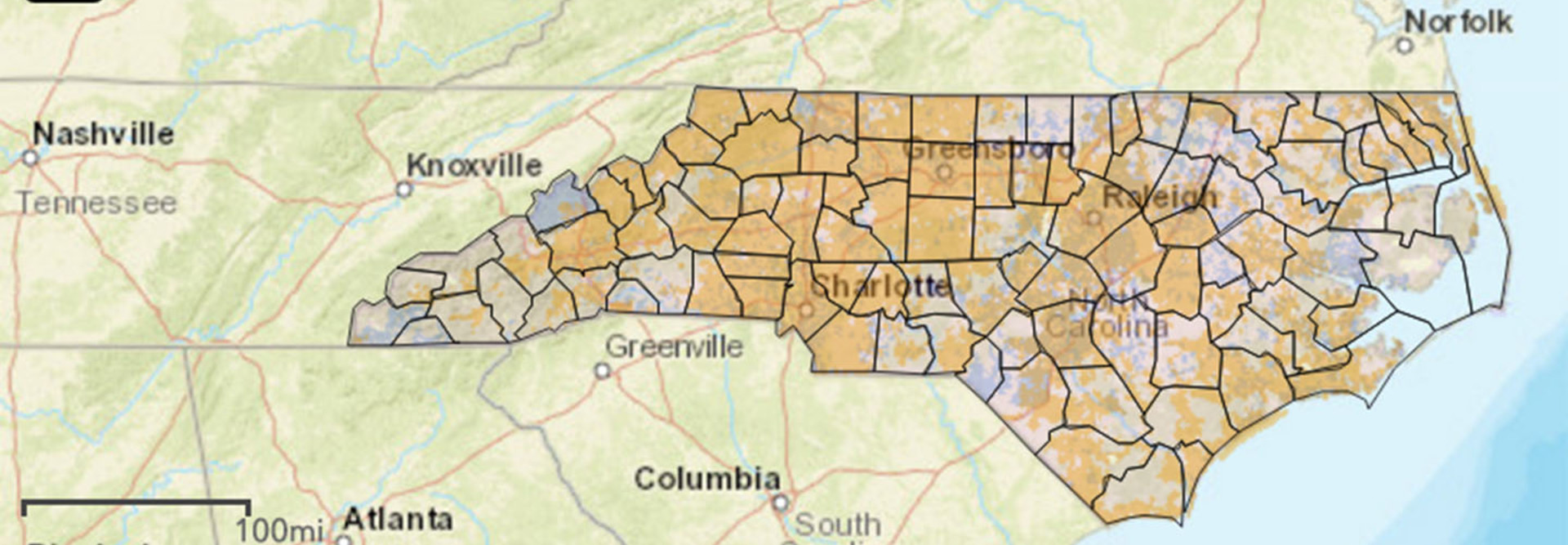North Carolina Seeks to Close Broadband Gaps Through Crowdsourcing Portal
If you thought that crowdsourcing was a nifty way to raise funds to kick start your latest invention or help law enforcement track down criminals, here’s a new way to put it to work: improving internet access.
This is the idea behind a new reporting tool launched by North Carolina’s Broadband Infrastructure Office. The online user-reporting tool aims to help “identify the pockets of unserved and underserved areas around the state,” according to the tool’s website.
By gathering accurate information from users within the state, North Carolina’s government is hoping to get a better picture of broadband coverage and to use the information to develop strategic plans to improve connectivity for homes and businesses.
“Access to high-speed internet is crucial these days, and I’m encouraged by the fact that this technology will bring us one step closer to making sure that North Carolinians receive the services they need, regardless of their geographic location throughout the state,” said Secretary and State Chief Information Officer Eric Boyette in a press release.
SIGN UP: Get more news from the StateTech newsletter in your inbox every two weeks
Rural Areas Are the Worst Hit by the Digital Divide
The portal is a creative way to gather information and populate a map that shows the internet speeds homes and businesses receive throughout the state, an important aspect given that the Federal Communications Commission has not updated its map of the country’s national broadband data since 2014. Aside from fleshing out a more pointed strategy for improving coverage, the information will also be reported to the FCC to help build a picture of the gaps in coverage in rural America.
Without accurate data, it is difficult for states to properly roll out broadband to businesses, homes and schools, particularly in rural areas, which are being disproportionately hit by the digital divide.
According to 2016 data from the FCC, 10 percent of Americans, roughly 34 million people, do not have access to broadband — or internet that hits a speed benchmark of 25Mbps download/3Mbps upload for fixed services. Of that number, 39 percent of all rural Americans, 23 million people, lack broadband access.
“The digital divide continues to plague rural America in particular,” Rep. Marsha Blackburn, chairwoman of the House Energy and Commerce Subcommittee on Communications and Technology, said at a congressional hearing on June 21.
Many states have begun initiatives that aim to put a pin in the divide and expand access in underserved regions. West Virginia, for instance, recently moved forward with a project to provide broadband access to three of its counties via a $3 million grant from the U.S. Department of Agriculture.
“To really drive economic growth and help West Virginians find jobs in a changing economy, we have to connect our communities, especially those in rural areas,” West Virginia Sen. Shelley Moore Capito told The Exponent Telegram.
North Carolina is also highlighting the importance of broadband in rural regions and is hoping to enter into development efforts with its eyes wide open thanks to the new web portal.
“The data reported to the FCC by internet service providers gives us only general information about what is available across the state. We repeatedly hear from citizens that their homes or businesses do not have internet access even though the map shows they do,” said Jeff Sural, director of the Broadband Infrastructure Office, in the press release. “This new platform will help to provide information that can be extremely important for project planning and funding purposes.”









